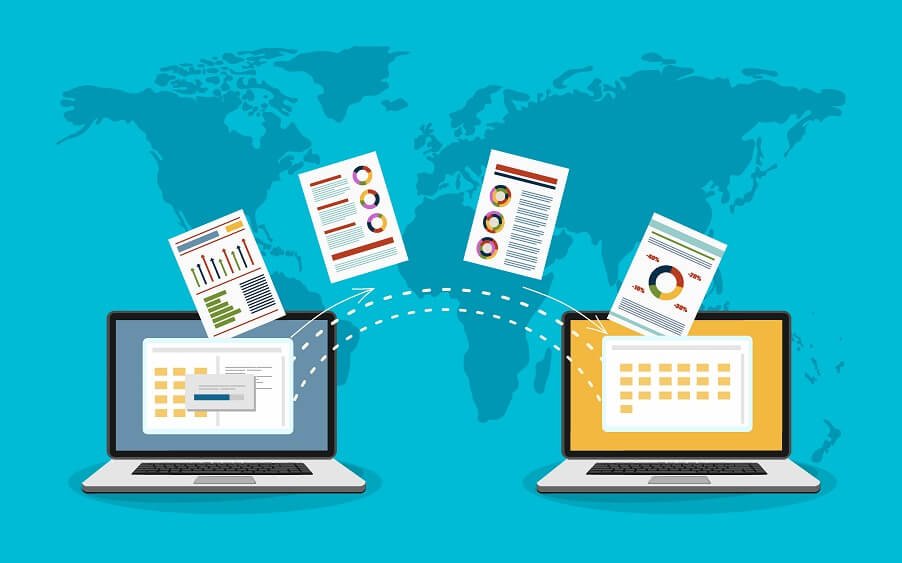The process of digitally and safely transferring one or more files is known as secure file sharing. This technique allows individuals and organizations to privately share files and protect the shared information from unauthorized users.
File sharing allows a certain number of individuals to read, view, and edit shared documents. However, this would depend on the accessibility permissions granted by the file owner to the intended recipient. In terms of storage, a fixed quantity of file storage space is often allocated per user when using file-sharing services.
Importance Of Secure File Sharing
File sharing is an essential aspect of teams working remotely. This allows individual members of the organization to collaborate seamlessly through document previewing, locking of confidential files, and tracking of document revision history, to name a few. File sharing saves time and avoids the loss the information.

However, this business practice is also a source of security concern. If not done right, it makes your business data vulnerable to unauthorized servers and users, putting the company at risk of data misuse. To prevent this from happening, here are some tips for you to know to guarantee that your files are transferred safely.
- Choose A Secure Platform
Undoubtedly, sharing files over the internet has its advantages. However, some platforms have weak security features and could allow hackers to easily steal files and use private information. This not only jeopardizes data privacy but also allows hackers to profit from these files.
To guarantee that your data is safe and secure, you must choose the right platform. Instead of using random sites on the internet, it is best to invest in file transfer software that you can configure depending on your business needs and security requirements.
- Double-Check Your Permission Settings
Anybody who uses the internet and has the correct URL of your files can access them. In some cases, free or random file-sharing websites even keep your private information that you don’t want them to have.
Before sending out files, always remember to check the permission settings set for the intended recipients. Aside from the access links, you can up the privacy protection by including passwords in folders and confidential documents.
- Audit File Transfers
Conducting an audit of file transfer activities will allow you to have detailed information of who has and will have access to them. This is a critical step as it will also allow you to prevent and detect data breaches now and in the future.
You can also trace the movement of data and information by keeping track of user activities. This could be a tool to measure productivity but also complies with the requirements for electronic correspondences to be archived.
- Store Key Documents On Encrypted Systems
Encrypting your files preserves your privacy if you save and transfer files online using file transfer software.
The data encryption feature in this software makes sensitive information unreadable by encrypting it with a particular algorithm. Thus, these files can’t be opened by anybody other than you and the intended recipient.
Without getting into the specifics of these technologies, they are both tried and tested methods of guaranteeing that you can only access the data you need and have.
- Use An Antivirus
Antivirus software is designed to identify, block, and respond to dangerous software or malware. Having an antivirus installed on your computer will be beneficial for both the sender and recipient of the files.
If you download a malicious file from a website without using antivirus or anti-malware software, the virus will assault your system undetected. Not only would it damage your computer, but it will also expose and corrupt your files.
- Clearing Cache
When you have a site that isn’t performing correctly, deleting the cache is one of the first things that we do. Deleting cache data helps in troubleshooting, optimizes web page loading times, and increases the performance of your computer. How can this also protect your privacy?
If you are using a public computer or sharing your device with someone else, clearing the cache before logging out is recommended. This deletes any data such as passwords and logins that you used to access file-sharing sites and applications.
Take Away
When dealing with files and sharing them digitally, privacy protection is paramount. You must exercise caution and ensure that the information entrusted to you by the company is not and will not be compromised in any way.
Easy to use file-sharing software is available that can and will make this task convenient, safe, and secure. This will also enable teams, especially those working remotely, to accomplish tasks more efficiently.

I have read this article and found it very valuable for the readers.
Thank you for the article. Its helpful!